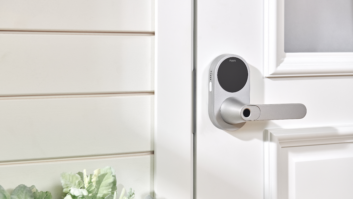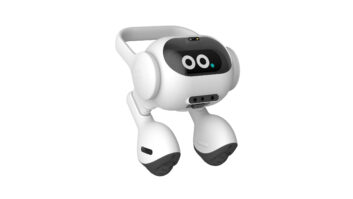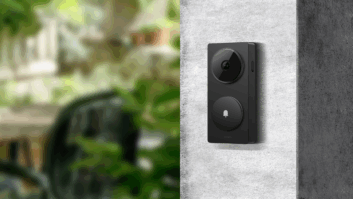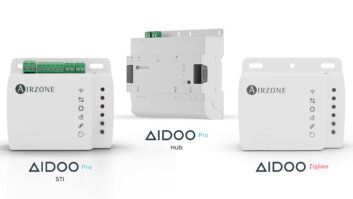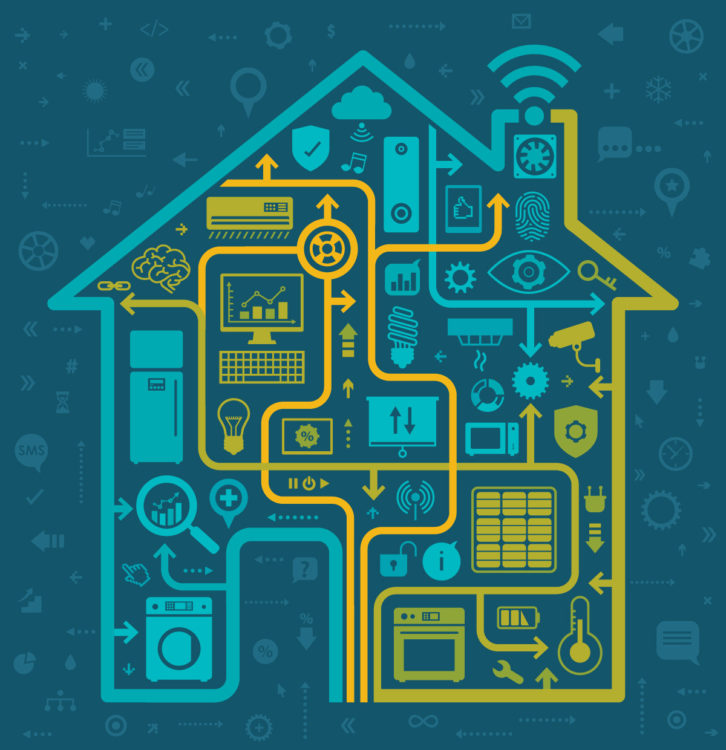
Whether you’re new to smart home integration, have done one-off product installs, or are a seasoned industry veteran, you’ve likely run into the challenge of connectivity. The technology that is orchestrating these devices talking to one another is an important consideration. There are lots of factors that impact why consumers choose to create a smart home — entertainment, convenience, increasing home efficiencies and energy expenditures, security — but behind the scenes, almost everyone who plays a role in the IoT industry knows one of the biggest barriers to adoption continues to be a lack of interoperability and the growing number of competing wireless standards used in smart home devices.
For the last few years, I’ve been hosting an education course at CEDIA Expo — called “What’s with this Z-Wave, Zigbee, and Bluetooth? What are the differences, what is this mesh stuff, how will they affect my projects and why should I care?” — that covers wireless standards in the smart home and offers a primer for installers, integrators, and others responsible for installing and selling the smart home. If interoperability is the Holy Grail, writing device drivers are the Crusades. And as more and more “hero” products populate the minds (and homes) of our clients, integrators must become receptive to installing them in their projects. Thus, it has become essential to understand what protocols/standards (platforms) these products are using for control, what these platforms can (and cannot) do, what promises are actually being kept and can be counted upon, and how they differentiate from each other.
Here is a high-level look at the topics we cover in the course as well as some answers to the big questions that we’re hearing from the community.
A Brief History of Wireless Standards
What is a wireless standard? A standard, or protocol, is the language or functionality of how devices communicate and understand one another. Many cite the advent of the modern-day smart home protocol back to the 1970s with the creation of X10 — the first general-purpose communication protocol for electronic devices. Soon after, a variety of other protocols such as Z-Wave, UPB, Wi-Fi, and Insteon were developed to solve different problems for the consumer electronics and home control markets.
UPB was released in 1999 using power line wiring for signaling and control through the existing electrical wiring in the home. It was a highly technical technology, difficult for DIYers with little-to-average technical knowledge to adopt. The early ’90s saw the introduction of Wi-Fi, designed to transmit large packets of data wirelessly; today Wi-Fi’s role in the smart home allows devices to connect to the internet, stream high-bandwidth content, and play games. Wi-Fi does have challenges such as high device interference and large power draw, which isn’t ideal for battery-operated products. Wi-Fi does not specify the application layer, thus devices using Wi-Fi do not necessarily work together.
Zigbee, an early mesh networking technology, is a wireless protocol which has been leveraged to develop many different “profiles,” and is used primarily in the commercial, energy, and remote-control markets, with proprietary use by several industry brands such as Crestron and Control4. With so many different profiles, Zigbee products are not necessarily interoperable, thus creating some confusion in the marketplace (“which Zigbee?”). The Zigbee Alliance has addressed this problem with the release of Zigbee 3.0, which does mandate interoperability, yet with so many existing products and profiles the promise will take some time to clear up any confusion.
Like Zigbee, Z-Wave is a mesh networking protocol that was introduced in 2001 by Danish company Zensys and today is owned by Silicon Labs. Z-Wave was built specifically for the smart home (long before anyone was calling it that), thus there is only one version. Home control enthusiasts and developers knew that, to succeed, a standard had to ensure all products would simply work together, use low amounts of power, and not interfere with other household electronics while also growing stronger (not slower) as devices are added. Z-Wave’s legacy as one of the original mesh technologies for home control continues today — Z-Wave is supported by the Z-Wave Alliance, a member consortium of industry leaders promoting the standard that at the time of writing boasts over 3000 certified Z-Wave devices and over 700 members.
In the last few years, the need for low-power mesh networks as the backbone of smart home tech has led others to explore their own technologies as the smart home opportunity grew. We’ve seen newcomers to the space like Thread and existing standards groups like Bluetooth Special Interest Group (SIG) and the Wi-Fi Alliance have announced their own versions of mesh network protocols with Bluetooth Mesh and Wi-Fi HaLow. Bluetooth Mesh is just now beginning to see adoption by device makers, and I do expect it to grow in popularity once the SIG develops their recently announced project to define an interoperable application layer. As for Wi-Fi’s HaLow, that may prove to be too little too late, as there has been little to no momentum.
Each of these standards or protocols offer their own benefits and capabilities for the smart home ecosystem, but the most critical to ensuring larger industry success is interoperability.
Interopera-What?
To understand how the software stack in a smart device works, we often refer to OSI (Open Systems Interconnection) model, or the seven layers of conceptual computing; Application, Presentation, Session, Transport, Network, Data, and Physical — each representing a different component of the device. Interoperability is defined at the application layer — it’s not just the radios talking to one another. So what is the role that interoperability plays? It is the ability of a system or a product to work with other systems or products without special effort on the part of the customer or dealer/installer. This becomes increasingly important as more devices are added to a home. The more devices a household owns, the more interoperability matters as a purchase process consideration.
There is already a consumer awareness of this — they just want their devices to work without any added effort on their end. A 2016 Parks Associates study found that 91 percent of those surveyed “expect that different devices in the home should work together automatically” and “88 percent would prefer a single app to control all devices.” The integrator and dealer community face this same need as they look to install systems. It impacts both their time spent on site, customer satisfaction, and also service after the install is done.
Looking Towards the Future
The smart home of the future will continue to add more connected devices, and with this growth comes the continued issue of product interoperability and devices being able to communicate with one another effortlessly. This isn’t a reality we can escape. But the conversation has to be shifted beyond just the devices themselves to also encompass the larger smart home network. I often use the example “a true smart home is the difference between just ‘thingies’” — stand-alone devices being used to control an element of a home — versus a fully-coordinated and connected true smart home that seamlessly connects and controls to offer ease-of-use for end-users. The role of the protocol or standard is critical to that success.
There is also the consideration of DIY vs. DIFM (do it for me) — we often see it pitted in the industry as having to choose one or the other, but there is certainly a place for both. Consumers might start with a single device and enjoy it, but once they want to add more devices, they run into issues with product compatibility, time, and just overall frustration of having to figure it all out. That’s where the residential DIFM channel steps in and opportunities abound.
It’s also important that, as an industry, we’re taking steps to make the installation and usage of smart home devices simpler as well. At Z-Wave, for example, we’ve taken steps to do this with the latest Z-Wave 700 Platform to make sure that both the consumer and integrator/installer smart home experience continues to become more seamless and easy-to-use, safe, secure, and future-proofed for new technology like AI in the smart home.
The smart home market will continue to grow and, so far, we haven’t seen a large push for one standard or technology to rule them all. A hardware-based solution such as multi-protocol chips or a software based “interpreter” that can use a variety of protocols to communicate in one device are certainly a consideration when looking at the future of smart home, but we’re not yet close to making that a reality.
Related: Wi-Fi 6 — Are You Ready?
Why Should the Residential Channel Care?
For integrators, dealers, and others installing and selling the smart home, there is a responsibility to help consumers understand what they are bringing into their homes and the role that each technology plays in their overall experience. Understanding how these technologies work, and why, is a great place to start. Ultimately, being able to successfully navigate and understand the technology connecting the devices installed will help to ensure customer satisfaction after the install, better usability for the customer, and eventually help contribute to more sales and greater consumer interest.
The fact of the matter is all wireless standards have their pros and cons, but the most important factors for adoption continue to be interoperability and security, as well as greater product choice to ensure success. And when we better understand the technology impacting critical adoption drivers such as interoperability, integrators, installers, and others in the residential channel are able to make more informed decisions for their businesses and their customers.
Mitchell Klein is executive director of Z-Wave Alliance and a leader in smart home and IoT, dedicating his career to educating the industry, creating and implementing strategic business programs, and leading companies that helped bring smart home and custom installation into the mainstream. Klein’s career has included systems integration management to business strategy and development, but above all he is a 30+ year industry veteran in IoT, consumer electronics, home automation, and the integrator market.
Learn more about Z-Wave Alliance at www.z-wavealliance.org.

